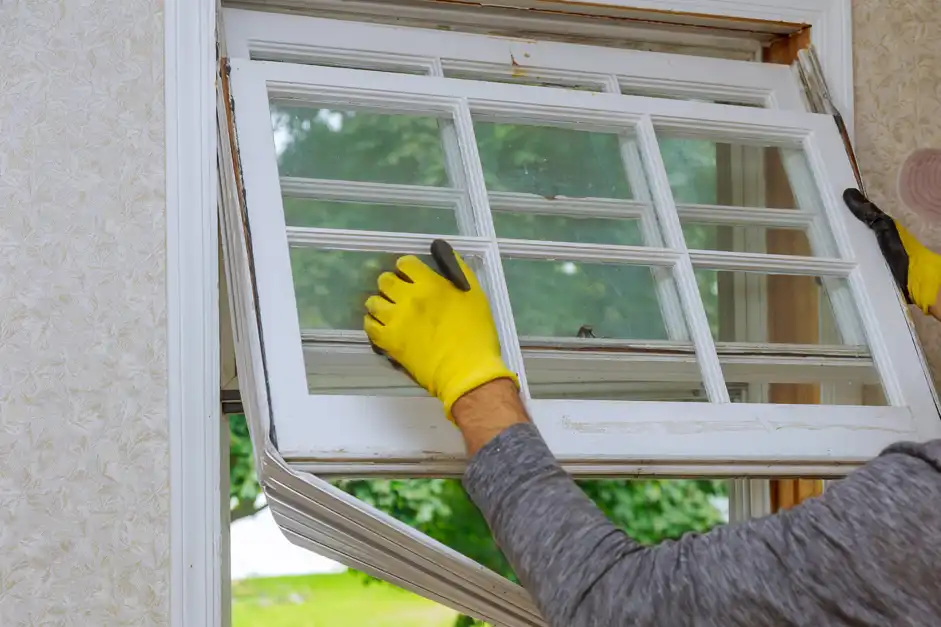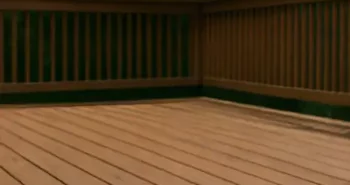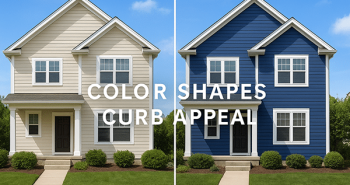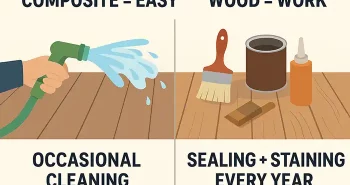When it comes to lowering your energy bills, most homeowners immediately think of upgrading appliances or adjusting thermostat settings. But did you know that the exterior of your home plays a significant role in energy efficiency? Here, we’ll go over a few home exterior upgrades that can help you improve efficiency and reduce energy bills.
How a Home’s Exterior Affects Energy Efficiency
Your home’s exterior does more than protect you from the outside elements. It also plays a crucial role in determining the amount of energy your home consumes for heating and cooling. When the exterior is well-designed and properly maintained, it acts as a barrier that helps minimize heat transfer between the inside and outside of the house. With an energy-efficient exterior, you can help lower energy consumption, thus reducing your monthly bills.
However, there isn’t just one stand-alone component to make your home energy-efficient. It usually requires a combination of several factors, such as:
✔ Optimized insulation and air sealing
✔ Efficient windows and doors
✔ The proper roof and siding materials
✔ Ventilation and moisture control
✔ Strategic exterior home colors and finishes
When all the components of your home’s exterior work together, they can help make your indoor environment more comfortable without significantly increasing your bills.
Can Home Exterior Upgrades Really Save You Money?
Let’s say you live in a 2,000-square-foot house with single-pane windows that are over 20 years old. These older windows allow heat to escape in the winter and let hot air in during the summer, causing the HVAC system to work overtime.
You can dramatically reduce heat transfer by upgrading to double-pane, ENERGY STAR®-rated windows with low-E (low-emissivity) glass. These windows are designed to reflect infrared heat while still allowing natural light to enter.
According to the U.S. Department of Energy, homeowners can save between 7% and 15% or more on their annual household energy bills when replacing single-pane windows with energy-efficient models, depending on the climate and number of windows replaced. Over 10 years, that could mean $1,000–$5,800 in energy savings (depending on your initial bill prices), not to mention improved comfort, fewer drafts, and potentially increased home value. And that’s just from upgrading your windows.
9 Home Exterior Upgrades That Can Lower Energy Bills
As we mentioned, you can take several steps to help improve the energy efficiency of your home’s exterior. While you don’t necessarily need to do all these things at once, checking them off your to-do list over time can make a significant difference. Consider the following home exterior upgrades to help inspire your next project.
1. Energy-Efficient Windows and Doors
Replacing your windows for energy savings is a great option, especially if you still have single-pane models. Upgrading to double- or triple-pane windows filled with insulating gas, such as argon or krypton, helps reduce heat transfer. Alternatively, low-E glass coatings reflect heat while allowing natural light to pass through, thereby improving energy efficiency and comfort. If you’re not sure if you can fully replace the windows right now, adding weatherstripping is a great DIY quick-fix. You can learn more about how replacing your old windows will save you money here.
The same mentality applies to energy-efficient doors. Old or poorly sealed doors can make it harder for your HVAC system, as cool air escapes and warm air seeps in. Doors and windows are a great place to start for high-impact, energy-efficient upgrades.
2. Upgraded Siding with Insulated Backing
Another interesting way to lower your energy loss is to upgrade your home’s exterior siding. Some siding products are better than others, especially those that have foam backing or integrated insulation. While these might not be necessary depending on where you live, they can help reduce heat loss that typically occurs through wall studs. The added layer of protection also helps regulate indoor temperature and reduces energy use. Some popular options include vinyl, fiber cement, and even wood siding. Consult with your home exterior expert to discover more about your siding options.
3. Improved Roof Materials
Your home’s roof bears the brunt of solar exposure and weather, especially in hot or temperamental climates. Cooling roof materials, like reflective shingles or tiles, are designed to reflect more sunlight and absorb less heat. Even metal roofing can help lower utility bills!
You should also make sure that you have the proper attic ventilation to allow hot air to escape and reduce the risk of heat buildup that could increase internal temperatures. Working with a quality roofing company can ensure that you have everything you need for an optimized roof
4. Seal and Insulate Exterior Penetrations
Exterior penetrations are any opening or hole in your home’s exterior. This can include the siding, walls, foundation, or roof. Typically, exterior penetrations are used to help pass something from the inside to the outside or vice versa, such as with plumbing, electrical, and HVAC systems. While these are essential for your home’s overall function, any gaps or cracks around them can be a source of air leaks and energy loss.
Sealing these areas with caulk, spray foam, or gaskets and adding insulation helps create a tighter building envelope, lowering heating and cooling costs. If you’re not sure where to look or how to safely seal these areas, always consult with a professional.
5. Install Exterior Awnings or Shading Devices
This exterior upgrade not only boosts home energy efficiency but also enhances curb appeal. Consider adding awnings, exterior shades, or shutters to windows on the south- and west-sides of your home to help block direct sunlight during peak hours and add a cute aesthetic to your yard. You can also install a pergola or a seating area with an umbrella to enhance your livable space and reap the benefits of less direct sunshine. Play around with a few ideas and consider doing a bit of home improvement to balance out future utility bills.
6. Upgrade Gutters and Drainage
When you think of cost-effective upgrades, the first thing that comes to mind is unlikely to be your home’s drainage system. However, an effective gutter system protects your home from unnecessary moisture, which can damage insulation. When water interacts with insulation, the insulation starts to degrade and lose its effectiveness. And, while you might not be able to see this type of water damage, you’ll likely notice a higher strain on your heating and cooling systems. Although it’s important to perform regular inspections to catch these issues early, upgrading your gutters can help reduce the risk of them happening in the first place.
7. Add Landscaping for Natural Shade
Another exterior upgrade that can (surprisingly) help keep your home cooler during the summer is adding landscaping. By strategically planting trees, shrubs, or climbing vines, you’ll benefit from their natural cooling effects on nearby structures. Landscaping can block direct sunlight and, inadvertently, save you money on your energy bills. Then, in the winter, the leaves fall, allowing plenty of direct sunlight to warm your home. Just make sure you find something good for your climate and easy to care for, unless you’d prefer to add to your to-do list.
8. Replace or Repaint with Reflective Exterior Paint
It’s common knowledge that dark colors, such as black, attract and retain sunlight, which can increase the temperature of a building. Light-colored or reflective paints and coatings have the opposite effect. They reflect more sunlight and reduce the amount of heat that’s absorbed by your home’s exterior, thus lowering indoor temperatures and minimizing the load on your air conditioning system.
9. Install Solar Panels or Solar Shingles
Ultimately, if you truly want to reduce your energy bills, consider investing in your own personal solar energy source. Solar panels or integrated solar roofing systems can significantly reduce electricity bills by generating renewable energy on-site. Yes, the upfront cost is higher, but incentives, tax credits, and long-term savings often make it a wise investment for energy-conscious homeowners. If you’re in an area that could benefit from solar panels, talk to your roofing contractor today.
How to Prioritize Home Exterior Upgrades
Improving your home’s exterior isn’t always just about curb appeal or property value; it’s a smart investment in energy efficiency and monthly savings. Regardless of which energy-efficient home upgrades you choose to make, every little step matters! To help you determine the best options for your home, contact First Star Exteriors. Our team of expert contractors can handle everything from roofing and siding to windows and doors. With plenty of colors, materials, and installation processes to choose from, we’ll help you determine the best options to cut costs and keep your home looking its best. Reach out to First Star Exteriors today for a free estimate.





